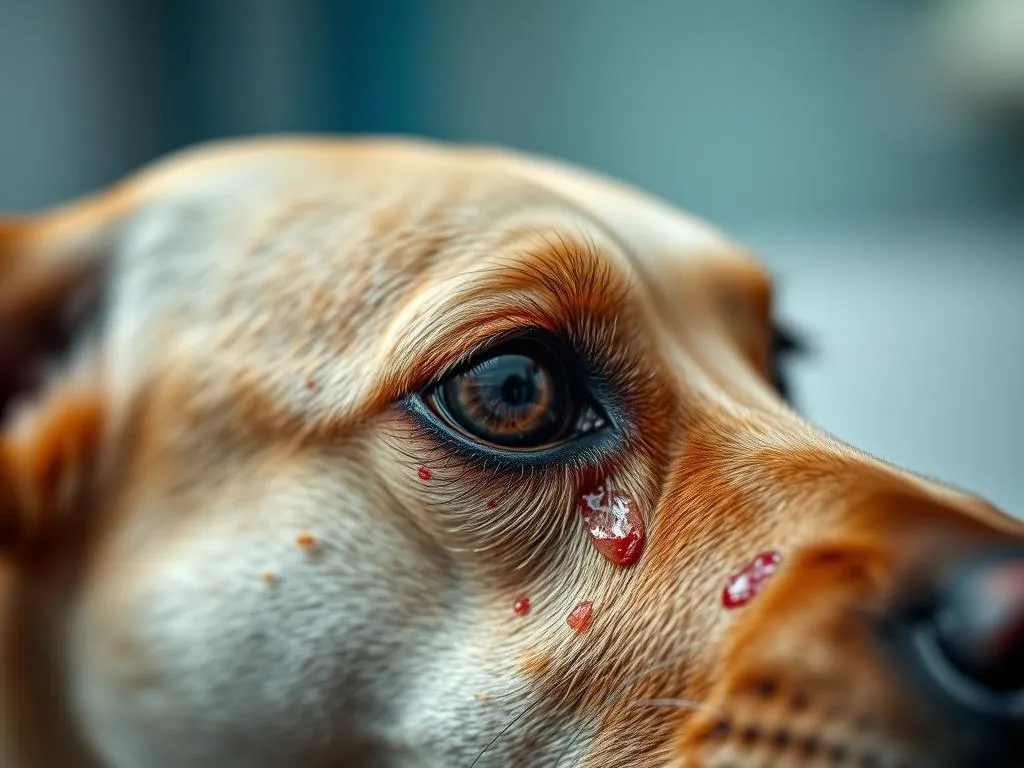
Maintaining good eye health is crucial for our canine companions. Dog eye infections can lead to discomfort, pain, and in some cases, severe complications if left untreated. These infections can occur due to various factors, and understanding them is essential for any dog owner. In fact, studies suggest that about 20% of dogs will experience some form of eye issue in their lifetime, with infections being a significant concern.
Let’s delve deeper into everything you need to know about dog eye infections, including their causes, symptoms, treatment options, and how to prevent them.
Understanding Dog Eye Infections
Definition of Eye Infections
A dog eye infection refers to any infection that affects the structures of the eye, including the conjunctiva, cornea, or eyelids. Unlike other eye issues, such as allergies or injuries, eye infections typically have a clear infectious cause, ranging from bacteria to viruses. Recognizing the difference is vital since treatment approaches can vary significantly.
Common Types of Eye Infections in Dogs
There are several types of dog eye infections that pet owners should be aware of:
-
Bacterial Infections: Often caused by environmental factors or pre-existing conditions, these infections can lead to severe inflammation and discharge.
-
Viral Infections: Though less common, viruses such as canine distemper can affect the eyes, causing conjunctivitis and other serious issues.
-
Fungal Infections: Typically occurring in immunocompromised dogs or those living in damp environments, fungal infections can lead to significant ocular damage.
-
Parasitic Infections: Certain parasites, like mites, can cause conjunctivitis or keratitis, leading to discomfort and potential vision loss.
Causes of Dog Eye Infections
Understanding the causes of dog eye infections can help in prevention and timely intervention.
Environmental Factors
Environmental factors play a significant role in the occurrence of dog eye infections. These include:
-
Dust, Pollen, and Other Allergens: Common allergens can irritate a dog’s eyes, leading to inflammation and potential infection.
-
Contaminated Water Sources: Swimming in unclean water can expose dogs to bacteria and other pathogens that can cause eye infections.
-
Exposure to Irritants: Chemicals, smoke, and other irritants can damage the eye surface, making it more susceptible to infections.
Pre-existing Conditions
Several pre-existing health issues can predispose dogs to eye infections:
-
Allergies: Dogs with allergic conditions are more likely to develop eye infections due to the heightened inflammation in their bodies.
-
Conjunctivitis: This condition can be both a symptom and a cause of subsequent infections if not treated properly.
-
Other Underlying Health Issues: Diseases such as diabetes can compromise a dog’s immune system, making them more vulnerable to infections.
Breed-Specific Factors
Certain dog breeds are more prone to eye problems due to their genetic makeup. Breeds like Bulldogs, Shih Tzus, and Pugs often have unique eye structures that can lead to a higher incidence of dog eye infections. Awareness of these breed-specific risks can help owners monitor their pets more closely.
Symptoms to Watch For
Recognizing the symptoms of dog eye infections is crucial for seeking timely veterinary care.
Common Signs of Eye Infections
Pet owners should be vigilant for the following signs:
-
Redness and Swelling: Infected eyes may appear red and swollen, indicating inflammation.
-
Discharge: The color and consistency of discharge can vary. A yellow or green discharge often indicates a bacterial infection, while clear discharge may be associated with allergies.
-
Excessive Tearing: Increased tear production can be a sign of irritation or infection.
-
Squinting or Pawing at the Eye: If a dog is squinting or frequently pawing at their eye, it may indicate discomfort or pain.
When to Seek Veterinary Care
Immediate veterinary attention is necessary if you observe:
- Severe redness or swelling
- Persistent discharge
- Signs of pain, such as whining or reluctance to open the eye
- Changes in behavior, such as increased lethargy
Prompt treatment can help prevent complications and promote quicker recovery.
Diagnosis of Dog Eye Infections
Veterinary Examination
When you bring your dog to the vet for a suspected dog eye infection, the veterinarian will conduct a thorough examination. They will assess the eye for signs of inflammation, discharge, and other anomalies. The examination may include:
- A visual inspection of the eye and surrounding tissues.
- Questioning about your dog’s medical history and any recent changes in behavior.
Diagnostic Tests
To accurately diagnose the cause of the eye infection, your veterinarian may conduct several tests:
-
Tear Production Tests: These tests measure how well the eyes produce tears, helping to identify conditions like dry eye.
-
Fluorescein Staining: This test uses a special dye to detect corneal ulcers or scratches, which can lead to infections.
-
Culture and Sensitivity Tests: If bacterial infection is suspected, a sample may be taken to identify the specific bacteria and the most effective antibiotics.
Treatment Options
Home Remedies
While professional treatment is often necessary for dog eye infections, some home remedies can provide relief:
-
Warm Compresses: Applying a warm, moist cloth to the affected eye can help soothe irritation and reduce swelling.
-
Saline Solution Rinses: Mild saline solutions can help flush out debris and irritants.
However, it’s essential to consult your veterinarian before trying any home remedies, especially if symptoms persist.
Veterinary Treatments
Veterinary treatment for dog eye infections may include:
-
Prescription Medications: Depending on the type of infection, your vet may prescribe antibiotics, antifungals, or antivirals.
-
Eye Drops and Ointments: These can help reduce inflammation and treat the underlying cause of the infection.
-
Surgical Options: In severe cases, surgical intervention may be necessary to address structural issues or remove foreign bodies.
Follow-Up Care
After treatment, follow-up visits are crucial. Your vet will want to monitor the healing process and ensure that the infection is resolving. Pet owners should also be attentive to any changes in their dog’s behavior or symptoms during recovery.
Prevention of Dog Eye Infections
Regular Eye Care
Preventing dog eye infections starts with regular eye care:
-
Routine Eye Cleaning and Checks: Regularly inspecting your dog’s eyes for signs of irritation or infection can help catch issues early.
-
Importance of Grooming: Keeping the fur around the eyes trimmed can reduce the risk of irritation and infection.
Environmental Management
Managing your dog’s environment can also help prevent infections:
-
Reducing Allergens at Home: Keeping a clean living space can minimize exposure to dust and pollen.
-
Avoiding Exposure to Irritants: Be mindful of smoking indoors or using harsh chemicals around your dog.
Vaccination and Health Maintenance
Maintaining your dog’s overall health through regular vet check-ups and vaccinations is vital. Vaccination against common diseases that can affect eye health helps reduce the risk of infections.
Conclusion
The health of your dog’s eyes is of paramount importance. By understanding the signs, causes, and treatment options for dog eye infections, you can be proactive in ensuring your pet remains healthy and comfortable. Regular monitoring and prompt veterinary care are essential in maintaining good eye health for your furry friend. Stay vigilant and prioritize your dog’s well-being to prevent and effectively manage any eye-related issues.
FAQs
Can dog eye infections be contagious?
No, dog eye infections are typically not contagious to other dogs, but underlying conditions causing the infection can be.
What home remedies can help with dog eye infections?
Safe home remedies include warm compresses and saline rinses, but it’s crucial to consult a vet if symptoms persist.
Are certain breeds more prone to eye infections?
Yes, breeds like Bulldogs and Shih Tzus are more prone to eye infections due to their anatomical features.
How can I tell if my dog’s eye infection is serious?
Signs such as severe redness, persistent discharge, and excessive pain indicate a serious infection requiring immediate veterinary attention.









